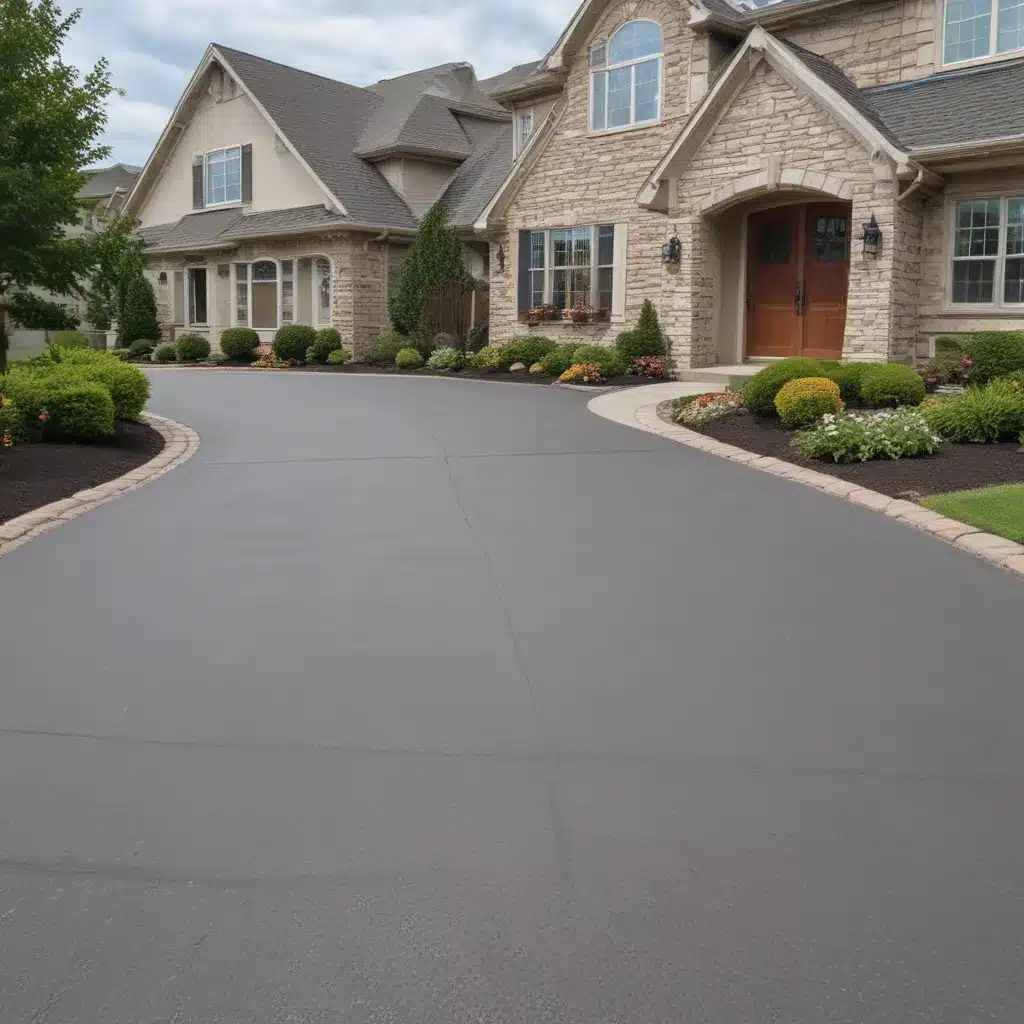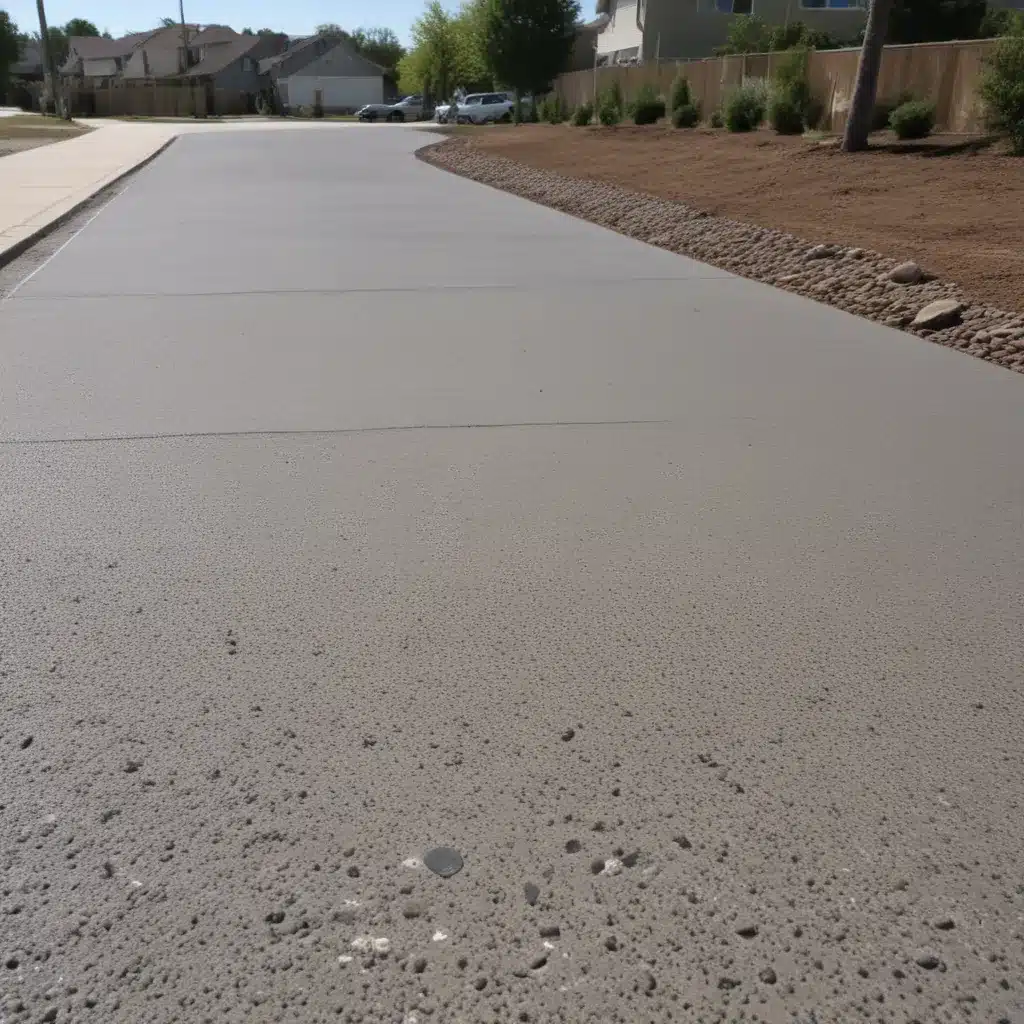Unlocking the Artistic Potential of Concrete
I’ve always been fascinated by the versatility of concrete. Sure, it’s the foundation upon which our roads, buildings, and infrastructure are built – the unsung hero of modern construction. But did you know that concrete can also be a canvas for artistic expression? As someone who’s passionate about design and the built environment, I’ve been experimenting with the creative potential of this ubiquitous building material.
Let me take you on a journey through some of the innovative ways concrete is being used to push the boundaries of art and design. Prepare to have your perceptions of this humble substance thoroughly shattered.
Beyond the Sidewalk: Concrete as a Sculptural Medium
When most people think of concrete, they envision dull, gray slabs – the kind that line our streets and driveways. But a growing number of artists are reimagining the material as a versatile sculptural medium. Take, for example, the work of Willy Verginer, an Italian sculptor who crafts breathtaking figurative pieces using a combination of wood and cast concrete.
Verginer’s sculptures blend the organic and the industrial, seamlessly integrating the rough, textured quality of concrete with the warm, natural beauty of wood. His pieces often depict the human form in contemplative, introspective poses, inviting the viewer to pause and reflect. It’s a striking juxtaposition that challenges our preconceptions about the rigidity and coldness of concrete.
Another artist pushing the boundaries of concrete sculpture is UK-based designer Giles Miller. Miller’s work explores the interplay of light, shadow, and texture, creating mesmerizing abstract forms that seem to defy the material’s inherent weight and solidity. One of his most captivating pieces, titled “Concrete Waves,” features a undulating, wave-like surface that appears to be frozen in motion, defying gravity and captivating the senses.
What I find most inspiring about these artists is their ability to imbue concrete with a sense of movement, emotion, and even tactility. They’re proving that this seemingly mundane material can be transformed into something truly extraordinary – a testament to the power of creative vision and technical mastery.
Concrete Couture: Fashion Meets Function
While the world of fine art has embraced the creative potential of concrete, the fashion industry has also begun to take notice. Designers are increasingly incorporating this unexpected material into their collections, blurring the line between form and function.
One pioneering figure in this realm is Iris van Herpen, a Dutch fashion designer known for her avant-garde, futuristic creations. Van Herpen has experimented with 3D-printed concrete, creating intricate, architectural garments that push the boundaries of wearable art. Her “Crystallization” collection, for example, features dresses and corsets that appear to be crafted from shimmering, crystalline structures – a mesmerizing fusion of high-tech and high fashion.
But it’s not just high-end couture that’s embracing concrete. In the realm of streetwear, designers are finding innovative ways to incorporate the material into more accessible, everyday pieces. Take the work of Los Angeles-based brand Cyberdog, which has created a line of concrete-infused T-shirts, hoodies, and accessories. The result is a striking, industrial-inspired aesthetic that seamlessly blends utility and style.
What I find so intriguing about these concrete-infused fashion statements is the way they challenge our preconceptions about the material. Concrete is typically associated with rigidity and durability, but these designers are proving that it can be just as versatile and expressive as any traditional textile. It’s a testament to the power of creative thinking and a willingness to embrace the unexpected.
Concrete Canvases: Exploring the Architectural Potential
While artists and designers have been experimenting with concrete on a smaller scale, architects have been pushing the boundaries of the material on a much grander stage. Concrete’s inherent strength and malleability have made it a go-to choice for visionary builders who are redefining the limits of what’s possible in the built environment.
One architect who has truly embraced the creative potential of concrete is Tadao Ando, the renowned Japanese designer known for his minimalist, brutalist-inspired structures. Ando’s works seamlessly integrate concrete with natural elements, creating a harmonious dialogue between the man-made and the organic. His Church of the Light, for example, features a stunning concrete façade that is dramatically punctured by a cross-shaped opening, allowing sunlight to flood the interior and cast mesmerizing shadows throughout the space.
Another architect who has demonstrated the architectural potential of concrete is Zaha Hadid, the late Iraqi-British visionary whose iconic structures have redefined the boundaries of form and function. Hadid’s work is characterized by its bold, organic shapes and innovative use of materials, including concrete. Her Heydar Aliyev Center in Baku, Azerbaijan, is a particularly striking example, featuring a flowing, curvaceous exterior that seems to defy the conventional constraints of the material.
What I find so captivating about the work of Ando, Hadid, and other visionary architects is their ability to transform concrete into something truly sublime. They’re proving that this ubiquitous building material can be elevated to the realm of art, creating structures that are not only functional but also deeply resonant on an emotional and sensory level.
Concrete Connections: The Human Element
As I’ve explored the creative potential of concrete, I’ve been struck by the way this material has the power to forge deep, meaningful connections between people and the built environment. Whether it’s a sculpture that evokes a sense of wonder, a fashion piece that challenges our preconceptions, or an architectural masterpiece that inspires awe, concrete has the ability to elicit a profound emotional response.
Take, for example, the work of Argentinian artist Luciana Rondolini, whose concrete sculptures explore the themes of human vulnerability and resilience. Her piece “Fractured” features a series of fragmented figures that seem to be grappling with the weight of their own existence, their forms simultaneously delicate and resolute. It’s a powerful, visceral exploration of the human condition that resonates on a deep, primal level.
Or consider the work of Japanese architect Kengo Kuma, whose concrete structures are imbued with a sense of timelessness and connection to the natural world. His Yusuhara Wooden Bridge Museum, for instance, features a striking concrete facade that appears to emerge organically from the surrounding landscape, seamlessly blending the manmade and the natural.
What these artists and architects are tapping into is the inherent humanity of concrete – its ability to create a sense of place, to evoke emotion, and to forge a deeper bond between the built environment and those who inhabit it. In a world that is increasingly dominated by sleek, impersonal technology, this tactile, experiential connection to the materials that shape our physical world has become all the more important.
Conclusion: The Future of Concrete
As I’ve delved into the creative uses of concrete, I’ve been struck by the sheer breadth of possibilities that this material holds. From sculptural masterpieces to revolutionary fashion statements to architectural marvels, concrete has proven to be a versatile and endlessly inspiring medium for artists and designers.
But what’s perhaps most exciting is the sense that we’ve only just begun to scratch the surface of concrete’s creative potential. With the advent of new technologies like 3D printing and advancements in material science, the possibilities for concrete-based innovation are poised to expand exponentially in the years to come.
Imagine a future where concrete is not just a foundation for our buildings, but an integral part of the design process – a canvas for avant-garde fashion, a medium for large-scale public art installations, and a catalyst for the creation of structures that seamlessly integrate with the natural world. The possibilities are truly limitless, and I can’t wait to see what the next generation of visionaries will dream up.
So, the next time you find yourself staring at a seemingly mundane concrete surface, I encourage you to look a little closer. Beneath that gray, unassuming exterior lies a world of artistic potential, just waiting to be unlocked. Who knows what creative marvels might emerge from the humble stuff of sidewalks and driveways? The only limit is the breadth of our imagination.





